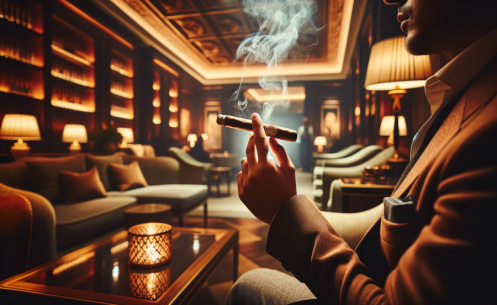Since the discovery of the New World, Cuban cigars have been synonymous with luxury, sophistication, and an unmatched taste experience. These rolled masterpieces, produced on the fertile land of Cuba, are not just a product; they are a story, a tradition, and a living symbol of history and quality. But what exactly makes a Cuban cigar so special, so sought after, and so distinctive? Dive with us into the depths of Cuba's cigar fields and uncover the mystery behind the world-famous aroma of the Cuban cigar.
The Unique Character of the Cuban Cigar
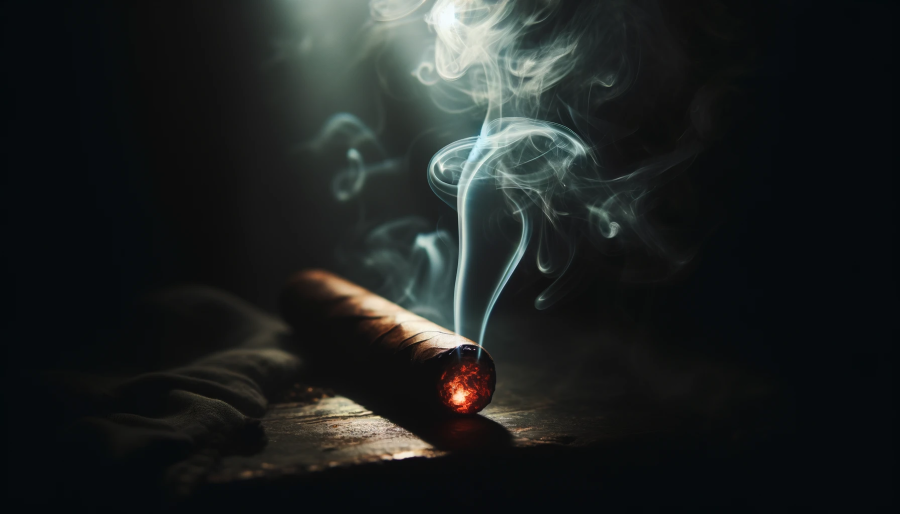
The influence of Cuban soil and regions Cuba's cigars are not just a product of their ingredients, but also of their birthplace. The fertile soil and the unique climate of regions such as Pinar del Río are essential for the cultivation of the world-famous tobacco plants. These areas offer the perfect balance of humidity and sunshine, crucial for the cultivation of tobacco that is rich in flavor and aroma.
The unique strains of the Cuban tobacco plant Each Cuban cigar begins its life as a carefully chosen seed. The tobacco plants that grow in Cuba are among the best in the world, with strains that are specifically selected for their flavor and aroma profiles. These strains, cultivated and perfected by generations of farmers, are the heart of the Cuban cigar.
The effect of Cuban weather on cigar production The weather in Cuba plays a crucial role in the production process. The combination of rainfall, sunlight, and wind creates a natural framework within which the tobacco plants can thrive. This delicate balance is essential; even small changes in the weather can have a major impact on the quality of the final cigar.
| Factors | Influence on the Cigar |
|---|---|
| Soil | Affects the nutrients and the flavor profile |
| Climate | Affects the growth and quality of the tobacco leaves |
| Tobacco Strains | Determine the unique taste and aroma of the cigar |
The Birthplace of the Legend: Cuba's Tobacco Regions
Cuba's tobacco regions, with Pinar del Río at the forefront, are world-renowned. It's not just the soil that makes these regions so special, but also the tradition and history that are woven into them. The tobacco farmers of these regions, also known as 'vegueros,' are true artists in their field, with knowledge and techniques passed down from generation to generation.
The importance of geography in cigar quality The location of a tobacco plantation can significantly influence the characteristics of the ultimately rolled cigar. Factors such as the altitude of the plantation, the composition of the soil, and the orientation towards the sun all play a role in determining the taste, aroma, and burning properties of a cigar.
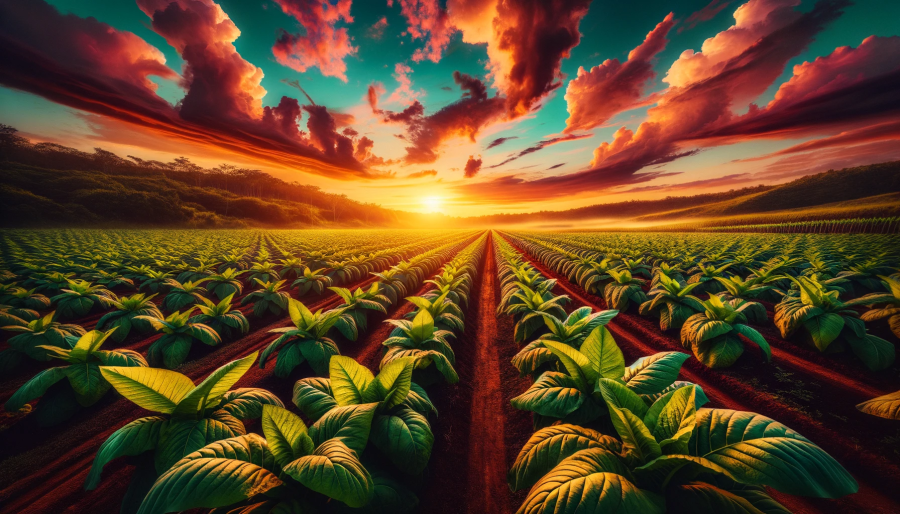
From Seed to Cigar: The Life Cycle of a Cuban Cigar
The journey of a Cuban cigar from seed to final product is a fascinating saga of care, dedication, and expertise. From the careful cultivation of the tobacco plants to the harvesting of the leaves, each stage plays a crucial role in determining the quality of the cigar.
Tobacco plants and their growth process The growth process of tobacco plants is intensive and requires constant care and attention. The plants are protected from direct sunlight by growing them under cloths, resulting in leaves that are rich in aromas and oils. These leaves form the basis for the complex flavors of a Cuban cigar.
Harvesting and fermenting tobacco leaves After harvesting, the tobacco leaves undergo a careful fermentation process, where temperature and humidity are closely monitored. This process is crucial for developing the rich, complex flavors that Cuban cigars are known for.
The Art of Cigar Rolling
Cuba is known for its hand-rolled cigars, a tradition of craftsmanship that is deeply rooted in the culture. This tradition is more than just a production method; it is an art form. Every aspect, from selecting the right leaves to meticulously rolling the cigar, is performed with utmost precision and care.
The importance of quality and skill in cigar rolling The skills of a 'torcedor,' a cigar roller, are crucial for the final quality of the cigar. A well-rolled cigar burns evenly, has a consistent draw, and offers an optimal taste experience. These skills are often passed down from generation to generation, with each roller adding their unique touch to the process.
| Rolling Technique | Effect on the Cigar |
|---|---|
| Even rolling | Ensures even burning |
| Precise selection | Guarantees the desired flavor and aroma intensity |
The Building Blocks of a Cuban Cigar
The making of a Cuban cigar is a meticulous process where every detail counts. The selection of the tobacco leaves and the specific layers used are crucial for creating the distinctive taste and aroma of the cigar.
The selection of tobacco leaves Each cigar is composed of three types of leaves: the 'tripa' (filler), the 'capote' (binder), and the 'capa' (wrapper). The quality and characteristics of these leaves determine the character of the cigar.
The rolling layers and their influence on taste The way the leaves are rolled and the combination of different layers affect the draw, burning duration, and flavor profile of the cigar. A masterful cigar roller knows exactly how to balance these elements to create a harmonious final product.

Taste Profile of a Cuban Cigar
The taste of a Cuban cigar is not just a delight for the connoisseur; it is a journey through a rich landscape of aromas and sensations. Each cigar tells its own story, with nuances ranging from subtle and soft to robust and complex.
How the taste of Cuban cigars stands out Cuban cigars are known for their depth and complexity. The rich, fertile soil of Cuba contributes to a flavor profile that is unmatched anywhere else in the world. The climate, soil, and skill of the farmers and rollers combine to create a product that is synonymous with luxury and quality.
The intensity and complexity of Cuban cigars The taste of a Cuban cigar can vary from light and floral to intense and full. The strength of the cigar is often determined by the mix of tobacco leaves and the aging time of the cigar. Connoisseurs appreciate the layering of flavors, where notes of cedar, leather, earth, and even chocolate and fruit can emerge.
The Challenges of Cuban Cigar Production
Despite their fame and quality, Cuban cigar production faces significant challenges. Natural elements such as hurricanes, along with economic factors, affect the availability and quality of these rare jewels.
Limited production due to natural and economic factors Cuban cigars are a product of their environment. Natural disasters such as hurricanes can have devastating effects on the tobacco fields and thus on the production of cigars. Economic challenges, such as low prices for farmers and restrictions on exports, add to the complexity of the cigar industry in Cuba.
The impact of climate change and economy on cigar production The effects of climate change are also felt in the cigar industry. Changes in weather patterns can lead to unpredictable growing conditions, jeopardizing the consistency and quality of the harvest. Additionally, economic factors, such as global market demand and political regulations, can influence the production and distribution of Cuban cigars.
Storing a Cuban Cigar: An Art in Itself
Storing a Cuban cigar is just as important as smoking it. The right storage conditions are essential for maintaining the quality and taste of the cigar over time.
The importance of humidity and humidors A constant humidity and temperature are crucial for the preservation of Cuban cigars. Humidors are specially designed to create and maintain these ideal conditions. The proper use of a humidor ensures that your cigars remain in optimal condition, ready to be smoked whenever you wish. For more information about humidors, visit Humidors.
Tips for optimally storing your cigars In addition to using a humidor, there are other tips that can help with storing your cigars:
- Store your cigars in their original packaging to preserve the flavor and aroma.
- Avoid storing cigars near strong smells, as the tobacco leaves can absorb odors.
- Regularly check the condition of your cigars and the humidity in your humidor.
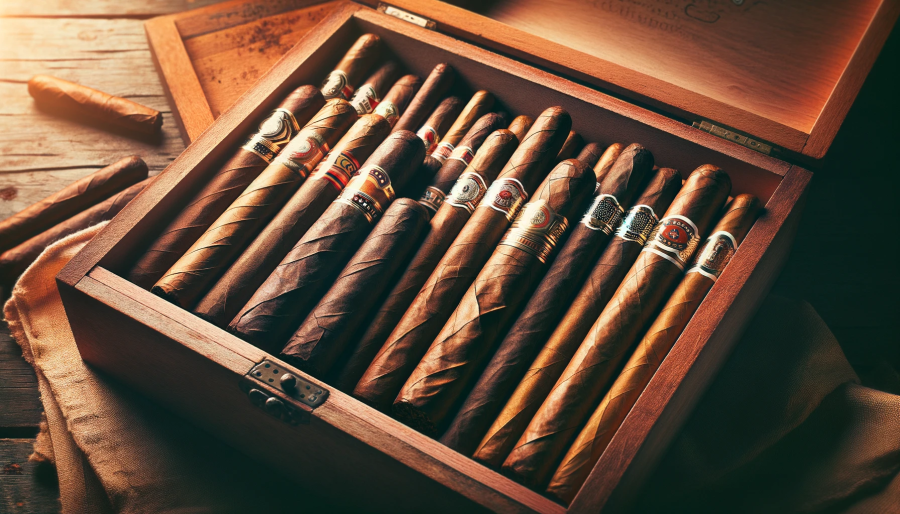
New World Cigars: A Comparison with Cuban Cigar
While Cuban cigars have a rich history and an unmatched reputation, there are also many other regions that produce high-quality cigars, known as New World Cigars. These cigars, originating from countries such as Nicaragua, the Dominican Republic, and Honduras, have their own unique qualities and flavor profiles.
Similarities and differences with Cuban cigars New World Cigars may have similar production methods and attention to detail as their Cuban counterparts. However, due to differences in soil, climate, and tobacco strains, they have their own distinctive characteristics. Although some connoisseurs claim that New World Cigars can be comparable to Cuban cigars, there is a consensus that the unique character of the Cuban terroir cannot be replicated.
The influence of climate and region on New World Cigars Just like Cuban cigars, climate and region play a crucial role in the quality of New World Cigars. Each area brings its own unique properties to the tobacco, resulting in a diversity of flavors and experiences for cigar enthusiasts. The art of cigar making is global, but the magic of Cuba's terroir remains unique.
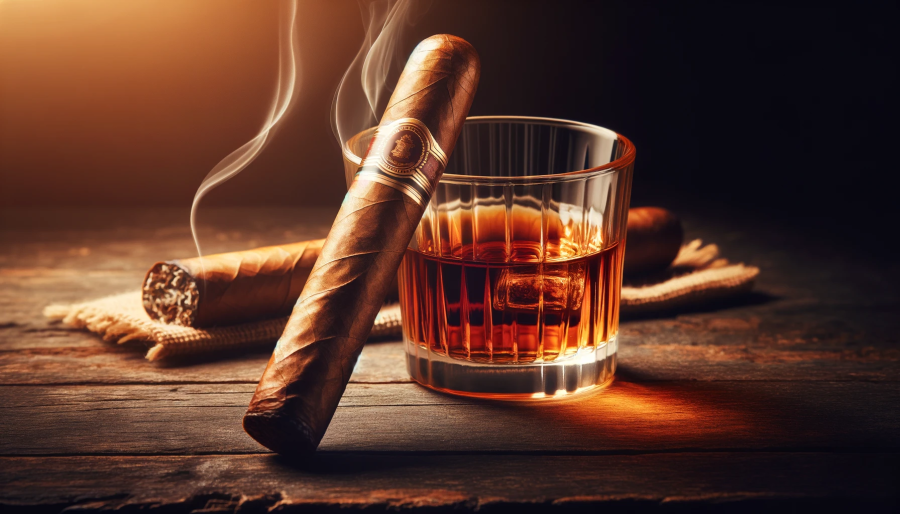
Conclusion
Cuban cigars are more than just a smoke; they are a symbol of tradition, luxury, and an unmatched taste experience. The unique character of the Cuban terroir, combined with the unparalleled expertise of Cuban cigar makers, ensures that each Cuban cigar tells a special story.
Key Insights (Key Takeaways)
- Cuban cigars are world-renowned for their unique flavor profile, influenced by the rich soil and ideal climate of Cuba.
- The art of cigar rolling is a deeply rooted tradition in Cuba, where each cigar is made with precision and care.
- The challenges in cigar production, such as climate change and economic factors, highlight the value and scarcity of Cuban cigars.
- Storing Cuban cigars requires careful attention to humidity and temperature, with humidors playing an essential role.
- While New World Cigars have their own unique qualities, the unique character of the Cuban cigar remains unmatched.
FAQ
-
How can I best store my Cuban cigars? Store your Cuban cigars in a humidor to maintain the ideal humidity and temperature. Ensure that you regularly check and maintain the humidor for optimal conditions.
-
What makes Cuban cigars different from New World Cigars? Cuban cigars are distinguished by the unique climate and soil of Cuba, as well as the traditional methods of cigar production that have been maintained for generations. While New World Cigars are also of high quality, the Cuban terroir has an unmatched influence on the taste and quality of the cigars.
-
Are there challenges associated with producing Cuban cigars? Yes, the production of Cuban cigars is affected by challenges such as climate change, economic factors, and natural disasters. These factors can affect the availability and quality of the cigars.
-
How do you taste a Cuban cigar to experience the full flavor profile? To fully experience a Cuban cigar, it's important to take your time and smoke the cigar slowly. Pay attention to the different flavor notes and aromas that unfold as you smoke, and enjoy the complexity and depth that each Cuban cigar has to offer.

